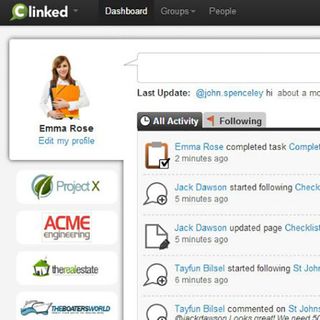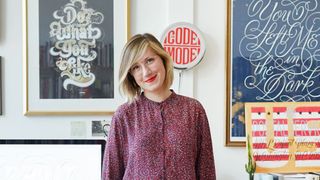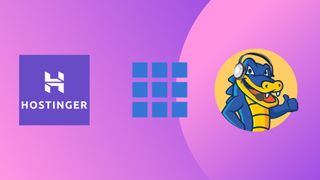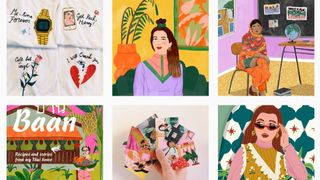5 ways to collaborate online and protect your designs
Online collaboration tools make life easier for designers – but use with care to protect your creative wares.
Collaboration is at the heart of any creative team. Connecting design ninjas with coding experts and demanding clients brings a lot of hands to the pump – and scope for some unscrupulous soul to steal your work.
Collaboration software gives control back to the designer and offers a safe space to share ideas. It also gives design teams a whole host of features to work efficiently while managing projects and people to tight deadlines and come up with the most creative solution.
Tayfun Bilsel, CEO at collaboration software company Clinked, told Creative Bloq: "Collaboration software allows designers, in particular, to get feedback from clients, gain approval on their artwork or even set up a space to work with other designers in a secure and professional setting."
Here are five ways to collaborate online and safeguard your design work.
01. Invite with care
It's pointless to use a secure collaboration system and then open the virtual doors to anyone and everyone. Evaluate each user on a need-to-know basis and, if they don't need to know, then don't invite them to collaborate. Bilsel said: "As a project gathers pace, you can always invite more people to contribute and further improve your collaborative efforts. It's not about shutting out users, but making sure you are working with the right users."

02. Control access
Once you have identified who to collaborate with, assign each user the appropriate level of control. Most collaboration systems give users three roles: administrators (with full rights to all content and member management), editors (who can upload and edit content but with no member management) and viewers (who can access but not edit or create content and no user management). New users will usually be given the lowest security ranking automatically – but make sure you check who is able to do what to your designs.
03. Keep a paper trail
Most online collaboration tools provide an audit trail feature so you can drill down and view reports on nearly every activity within the system. This is a great way to find out if anyone has been doing anything suspicious, such as removing or editing files.
Collaboration systems also offer an activity feed so you can easily pinpoint who has recently viewed, edited, downloaded or removed specific files.

04. Lock it down
You can also use file approval features to keep track of when documents and designs are signed off. This way everyone can see if a design has been rejected or signed off. This gives back some control to the document owner, allowing them to say when a design is ready for the outside world.
05. Check the security credentials
Only use an online collaboration tool with exceptional security credentials. It's not only about protecting your work from inside collaborators – but protecting it from outside threats as well. The Dropbox hacking scandal highlighted how vulnerable such systems can be. Ensure the system you use offers encryption, compliance certification and the option to use enhanced security measures, such as a private cloud system, for example.
Bilsel said: "A collaboration tool must balance stringent security measures with the freedom for effective collaboration. One without the other makes creative endeavours impossible and puts a designer's work in jeopardy."
Words: Gemma Church
Gemma Church is the freelance writer who gets tech, a Countdown finalist and lover of all things science.
Liked this? Try these...
- 3 top character design tips from Adventure Time's lead designer
- What happens one hour after drinking a can of coke
- How to build an app: try these great tutorials

Thank you for reading 5 articles this month* Join now for unlimited access
Enjoy your first month for just £1 / $1 / €1
*Read 5 free articles per month without a subscription

Join now for unlimited access
Try first month for just £1 / $1 / €1
Get the Creative Bloq Newsletter
Daily design news, reviews, how-tos and more, as picked by the editors.
The Creative Bloq team is made up of a group of design fans, and has changed and evolved since Creative Bloq began back in 2012. The current website team consists of eight full-time members of staff: Editor Georgia Coggan, Deputy Editor Rosie Hilder, Ecommerce Editor Beren Neale, Senior News Editor Daniel Piper, Editor, Digital Art and 3D Ian Dean, Tech Reviews Editor Erlingur Einarsson and Ecommerce Writer Beth Nicholls and Staff Writer Natalie Fear, as well as a roster of freelancers from around the world. The 3D World and ImagineFX magazine teams also pitch in, ensuring that content from 3D World and ImagineFX is represented on Creative Bloq.




